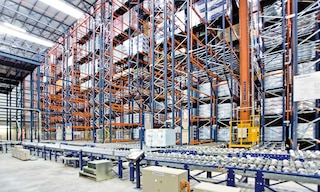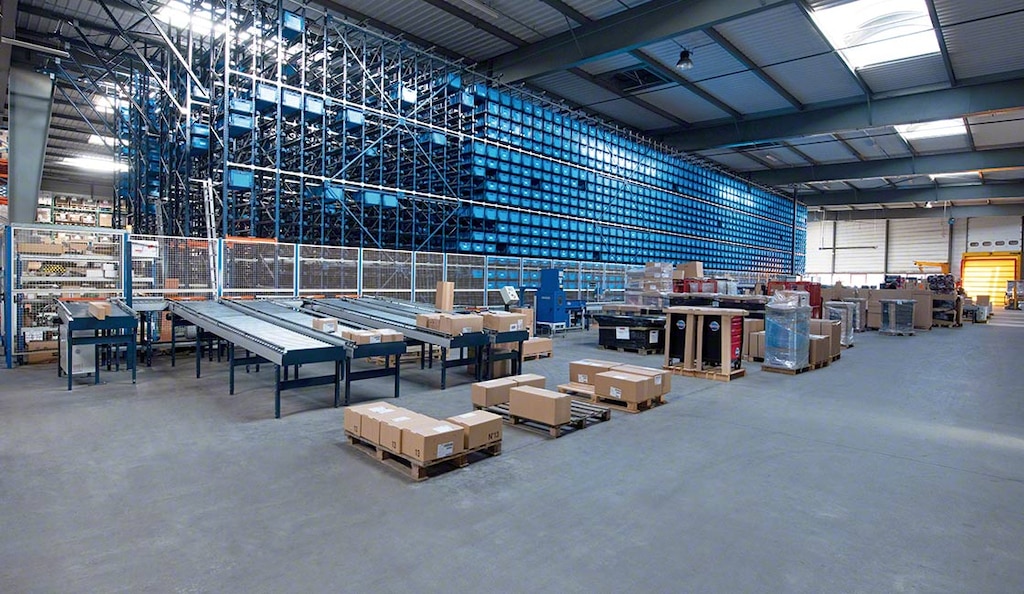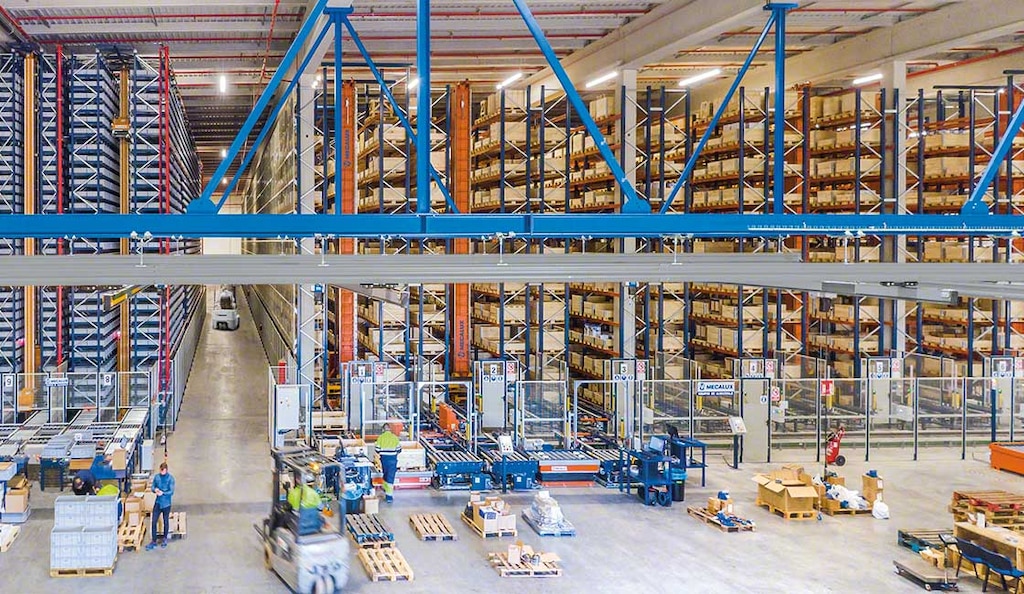
Material handling and the logistics operations involved
Proper material handling can make the difference between working in a professional, safe, and organized warehouse or operating amidst chaos. Fortunately, specific techniques and tools are available to make the tasks carried out in your facility more efficient.
What is material handling?
Material handling is a system or combination of methods employed to transport goods from one location to another. It includes protecting, packaging, moving, storing, and controlling goods, from production to distribution. To that end, material handling relies on automatic, semi-automatic, and manual equipment.
Objectives of material handling
Implementing processes and protocols for correctly managing transfers of goods reduces manufacturing costs, improves flows of movements, optimizes space and traffic in your facility, ensures safe conditions for operators, and increases productivity. For orderly, consistent logistics operations, it’s advisable to follow established industry standards for product handling and to be familiar with specific strategies, techniques, and tools.
What are the different types of material handling?
Material handling equipment is grouped into four main categories: storage and handling, bulk material, industrial trucks, and engineered (automated) systems.
- Storage and handling. The purpose of this equipment is to safeguard the goods when not in use. It includes pallet racks, boxes and other containers, and mezzanines.
- Bulk material. Liquids, food, mineral products (e.g., stones and rocks), and metal parts such as bolts and nails may require other material handling equipment. In these cases, it’s best to employ conveyor belts, stackers for loading and unloading heavy materials, reclaimers, bucket elevators, and hoppers.
- Industrial forklift trucks. These machines move materials within the warehouse, loading and unloading heavy objects. They come in different models, such as forklifts, hand trucks, turret trucks, pallet jacks, and order pickers.
- Engineered systems. These incorporate cutting-edge technology to store and transport products. They typically comprise several elements controlled by a warehouse management system (WMS). Engineered systems include stacker cranes, conveyors, transfer cars, automated guided vehicles (AGVs), and autonomous mobile robots (AMRs).

What are the benefits of material handling?
One of the main reasons to overhaul your material handling methods is the possibility of storing stock in smaller spaces. This enables you to bring down internal operational costs in material transport and picking, for instance. You’ll also simplify inventory management and optimize product flows. Additional incentives include:
- Enhanced workplace safety. The right material handling equipment saves operators from physical exertion and limits the risk of falls.
- Greater productivity and efficiency. With assistance in transporting, locating, and picking items, employees can dedicate their time to other tasks, such as quality control or shipment preparation.
Material handling in logistics
These methods and systems can be used across the different supply chain phases:
- Manufacturing. In industry, material handling begins in production, when stock is sent to manufacturing warehouses.
- Internal transport. These systems help place items into unit loads — primarily pallets and boxes — facilitating their transfer to specific areas of the facility.
- Storage. Housing products safely until they’re needed or distributed keeps them in good condition.
- Distribution. The boxes, pallets, or other storage units are handled again during shipping — whether with forklifts, pallet jacks, or automated conveyors — for distribution to retailers, wholesalers, or end customers.

Where is material handling applied?
Experts from the Material Handling Institute published the 10 principles to consider to make material handling as safe and productive as possible:
- Planning. Identify beforehand what you’ll be transporting, where you’ll store it, and what equipment you’ll employ.
- Standardization. Although you should be flexible, standardizing the measurements of all elements makes forecasting simpler. For instance, all boxes should be the same size.
- Work. One of the greatest advantages of material handling is restricting unnecessary and repetitive tasks through automation.
- Ergonomics. Investing in handling equipment that protects the health of operators improves safety.
- Unit loads. Using pallets and storage containers limits physical exertion and travel in the warehouse.
- Space utilization. Organize your facility optimally to maximize storage locations. You can also leverage space vertically with automated solutions.
- System. Integrating traceability tools such as a WMS lets you identify products and their location instantly.
- Environment. Choosing environmentally friendly machinery reduces energy consumption and prevents the emission of greenhouse gases.
- Automation. Implementing technology advances in processes such as order picking cuts costs and drives employee productivity.
- Life cycle cost. Consider all the stages that the material handling equipment will go through: its installation and programming, operations, repairs, and so on.
How to maintain material handling equipment
All equipment used in manufacturing, handling, packing, storage, and distribution requires maintenance. Not carrying it out can lead to safety risks and malfunctions.
Be sure to follow the instructions and advice provided by each manufacturer, which generally include:
- Conducting regular inspections of different elements, such as the pallet racks.
- Updating equipment when necessary.
- Training operators appropriately.
- Scheduling maintenance sessions.
Looking for guidance on organizing your products and shipments as efficiently and safely as possible? Be sure to contact us. As storage experts since 1966, we can help you improve the flow of goods at every stage — from receiving to shipping — with our automatic, semi-automatic, and conventional solutions. Moreover, our Easy WMS warehouse management system will provide you with real-time control over all your materials.
